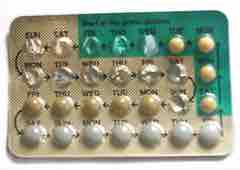The 1960s in the US are often perceived as a period of profound societal change, in which many young, educated, and politically-minded individuals sought to influence the status quo. The quest for autonomy during this time was also characterized by changes toward sexual attitudes, generally referred to as the "sexual revolution." Like much of the radicalism of the 1960s, the sexual revolution was most apparent on university campuses.
Changes in Social Norms
The modern consensus is that the sexual revolution in 1960s America was typified by a dramatic shift in traditional values related to sex and sexuality. Sex became more socially acceptable outside of the strict boundaries of heterosexual marriage. For example, studies have shown that, between 1965 and 1975, the number of women who had sex before marriage increased dramatically. Birth control was legalized following the Supreme Court ruling in Griswold v. Connecticut in 1965, while the Roe v. Wade decision in 1973 legalized abortion during the first trimester of pregnancy. The increased availability of birth control (and the quasi-legalization of abortion in some places) helped reduce the chance that premarital sex would result in unwanted pregnancies. By the mid-1970s, the majority of newly married American couples had experienced sex before marriage.
Changing Family Structures
This is a photo from the 1950s television program Leave It To Beaver. This program typified the traditional 1950s nuclear family structure; by the 1960s, this was changing. With the sexual revolution, many couples were having premarital sex, and many women were seeking careers outside the home.
Similarly, during this time, a culture of "free love" emerged. Beginning in San Francisco in the mid-1960s, this culture of "free love" was propagated by thousands of hippies who preached the power of love and the beauty of sex. By the 1970s, it was acceptable for colleges to allow co-educational housing where male and female students mingled freely. Hippies embraced the old slogan of free love from the radical social reformers of other eras.
The Sexual Revolution and "The Pill"
In the early 1950s, philanthropist Katharine McCormick provided funding for biologist Gregory Pincus to develop the birth control pill, which was approved by the Food and Drug Administration (FDA) in 1960. "The Pill," as it came to be known, was extraordinarily popular, and despite worries over possible side effects, by 1962, an estimated 1,187,000 women were using it.

The Pill
The combined oral contraceptive pills, approved by the FDA in the early 1960s. The Pill had a profound impact on feminism and the sexual revolution.
This new contraceptive technology was a key player in forming women's modern economic role by indirectly prolonging the age at which many women first married. This allowed women to invest in education and become more career-oriented. Soon after the Pill was legalized, there was a sharp increase in college attendance and graduation rates for women. From an economic point of view, the Pill reduced the cost of staying in school. The ability to control fertility without sacrificing sexual relationships allowed women to make long-term educational and career plans.
Women's rights movements also heralded the Pill as a method of granting women sexual liberation and saw the popularity of the drug as just one signifier of the increasing desire for equality (sexual or otherwise) amongst American women. The Pill and the sexual revolution was therefore an important part of the drive for sexual equality in the 1960s.
Birth Control and Population Control Advocacy
After World War II, the birth control movement had accomplished the goal of making birth control legal, and advocacy for reproductive rights transitioned into a new era that focused on abortion, public funding, and insurance coverage. Birth control advocacy took on a global aspect as organizations around the world began to collaborate. The International Planned Parenthood Federation was founded in 1946 and soon became the world's largest non-governmental, international family-planning organization. Fear of global overpopulation became a major issue in the 1960s, generating concerns about pollution, food shortages, and quality of life and leading to well-funded birth control campaigns around the world.
Birth control and the Pill were also part of the U.S. government's policies against poverty. In the early 1960s, President Lyndon Johnson instituted his social reform policy, known as the Great Society, which aimed among other things to eliminate poverty. Thus, as a form of population control, the Pill was endorsed and distributed by doctors.
Opposition to the Pill
The Pill became an extremely controversial subject as Americans struggled with their thoughts on sexual morality, controlling population growth, and women's control of their reproductive rights. Even by 1965, birth control was illegal in some U.S. states, including Connecticut and New York.
Because the Pill was so effective (and soon so widespread), it heightened the debate about the moral and health consequences of premarital sex and so-called promiscuity. Never before had sexual activity been so divorced from reproduction. For a heterosexual couple using the Pill, intercourse became purely an expression of love, a means of physical pleasure, or both—but it no longer had to be a means of reproduction. While this was true of previous contraceptives, their relatively high failure rates and their less widespread use failed to emphasize this distinction as clearly as the Pill did. The spread of oral contraceptive use thus led many religious figures and institutions to debate the proper role of sexuality and its relationship to procreation. The Roman Catholic Church in particular reiterated the established Catholic teaching that artificial contraception distorts the nature and purpose of sex. Opponents of the Pill, and the sexual freedom it provided to women, frequently cite the rise of out-of-wedlock births, sexually transmitted diseases, teen pregnancy, and divorce rates as evidence of the regression of quality of life since the advent of the Pill.